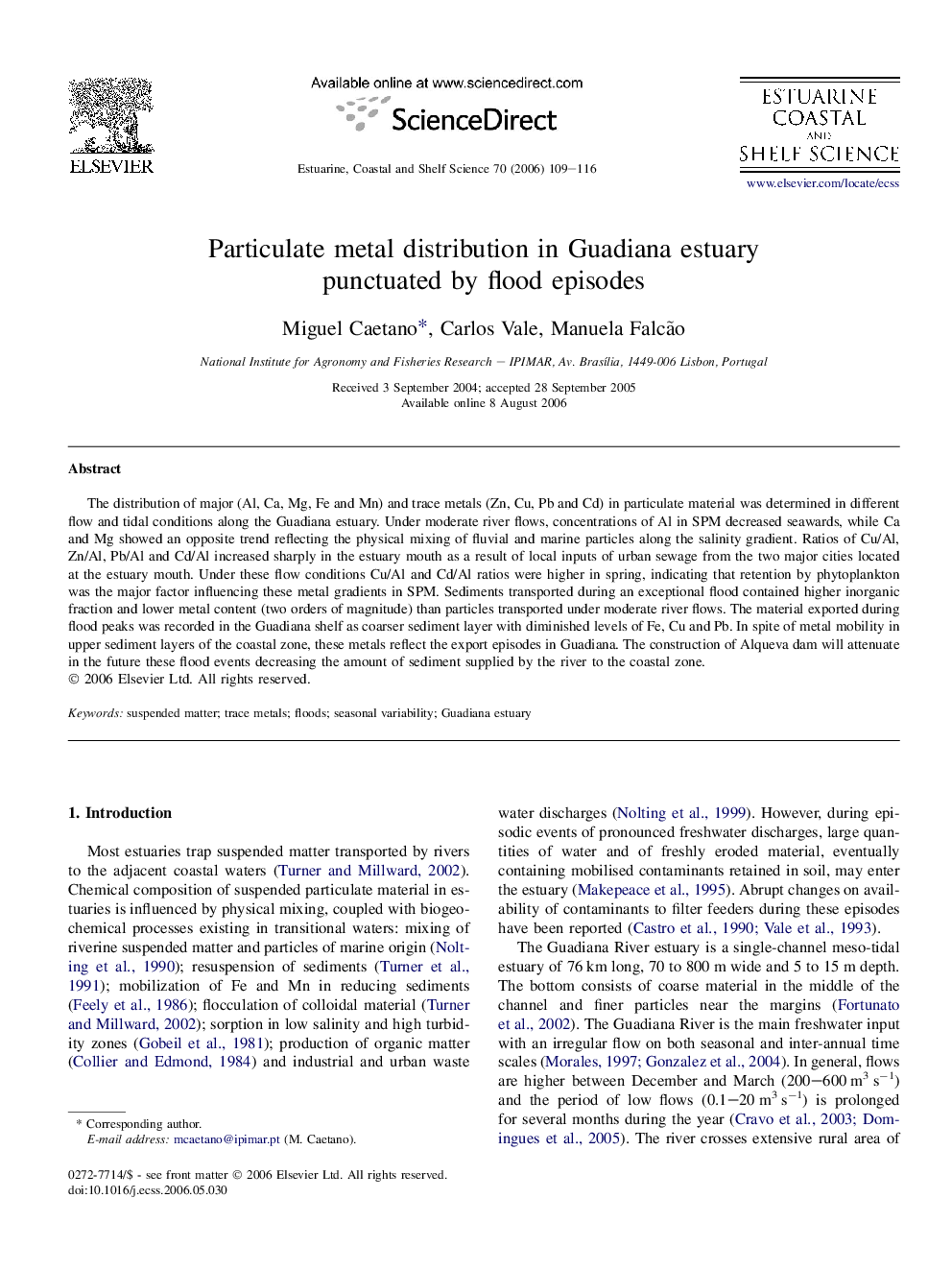| کد مقاله | کد نشریه | سال انتشار | مقاله انگلیسی | نسخه تمام متن |
|---|---|---|---|---|
| 4542464 | 1626709 | 2006 | 8 صفحه PDF | دانلود رایگان |

The distribution of major (Al, Ca, Mg, Fe and Mn) and trace metals (Zn, Cu, Pb and Cd) in particulate material was determined in different flow and tidal conditions along the Guadiana estuary. Under moderate river flows, concentrations of Al in SPM decreased seawards, while Ca and Mg showed an opposite trend reflecting the physical mixing of fluvial and marine particles along the salinity gradient. Ratios of Cu/Al, Zn/Al, Pb/Al and Cd/Al increased sharply in the estuary mouth as a result of local inputs of urban sewage from the two major cities located at the estuary mouth. Under these flow conditions Cu/Al and Cd/Al ratios were higher in spring, indicating that retention by phytoplankton was the major factor influencing these metal gradients in SPM. Sediments transported during an exceptional flood contained higher inorganic fraction and lower metal content (two orders of magnitude) than particles transported under moderate river flows. The material exported during flood peaks was recorded in the Guadiana shelf as coarser sediment layer with diminished levels of Fe, Cu and Pb. In spite of metal mobility in upper sediment layers of the coastal zone, these metals reflect the export episodes in Guadiana. The construction of Alqueva dam will attenuate in the future these flood events decreasing the amount of sediment supplied by the river to the coastal zone.
Journal: Estuarine, Coastal and Shelf Science - Volume 70, Issues 1–2, October 2006, Pages 109–116